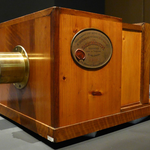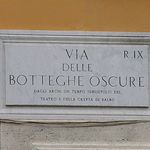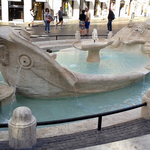Campidoglio
The Campidoglio is the lowest of the seven roman hills but at the same time is the most majestic since it was the acropolis and the religious center of the ancient town, always remaining the heart and the seat of the town government.
The ancient world and the modern one find their ideal connection point on this hill as if it were the stage which Michelangelo gave a special effect to.
On the analogy of Rome, several towns of the Roman Empire had their Capitoliums only if they had the cult of three divinities of the Capitolian Triad (Jupiter-Juno-Minerva ). The right to have such capitolium probably at least originally was reserved at least in origin for the Roman colonies.
The hill consists of the tufaceous rock. It is steep from three sides, joined with the Quirinal by a saddle cut only in the epoch of Traiano because of building of his Forum.
On the hill there are remains of walls dated by the IVth century a.c.On the southern side the Tarpeia Rock can be seen.
The hill is about 50 meters high on the sea level. Thanks to the strategic position dominating Isola Tiberina and the ford on the Tevere and to the inaccessible rocks which surround it among three hills of Rome it was the Campidoglium that fitted better to the citadel function of Rome. Two still visible tops (Arx e Capitolium) separated from the hollow (Asylum) correspond to the actual Piazza del Campidoglio.
From the northern part the real fortress named Arx can be found, and there was rising the Temple of Juno Moneta which means "Ammonitrice-Warner". The name of a coin (that is "moneta") then started meaning money since later the mint of Rome appeared near the temple. The mint was founded here in the 343 a.c. The temple of the Virtus rose here either and now it is occupied by the Church of Santa Maria in Ara Coeli.
The so-called Capitolium is located on the southern part where the Temple of Jupiter the Excellent was rising. It was the most worshipped temple of Rome from which few remains are left. Now it is occupied by the new wing of Museo dei Conservatori.
The Tabularium that is the state archive was built among two tops in 78 A.C. Palazzo Senatorio was built above it. It had the appearance of a fortress and was rebuilt several times until the final Michelangielo's layout (the project of 1536 was executed only in 1603). In the basements of the edifice the small temple of Veiove was discovered.
Besides other various temples existed on the hill. Among them were three ones dedicated to Jupiter ( Feretrio, Tonante e Custode ). The others were dedicated to Mars Ultore, Venere Erecina,to the Mens and to the Opus. The altars,the statues of kings and famous personalities (among them was a statue of the Lupa Capitolina) were numerous here.
Private houses were raised on the slope of the hill close to the Velabro and the Field of Mars.
There were four stairs of approach to the Campidoglio
- the first one lead from the Forum and it was named clivus Capitolinusshortened by a stair of a hundred steps.
- The stair named scalae Gemoniae
- The stair inside the Tabularium obstructed later for to set up the Vespasian temple.
- The stair named gradus Monetae leading from the Campo Marzio
The first and the biggest temple of the Republic together with the principal sanctuary of the Romanismo were inaugurated here in 509 a.c by Tarquinio Prisco.
The sanctuary had three cells: the biggest central one dedicated for Jupiter Capitalinus, the smaller side ones dedicated for Juno and Minerva.
Decorated by Vulca it was fired in 83 a.c. and later rebuilt several times for the last one by Domiziano. A few remains are left from the sanctuary. Beginning from the VIth century d.c.the increasing decline and spoliation of the Campitolium had place, between the ruins the goats were grazing and it got called Monte Caprino (the Goat Mountain) yet remaining the seat of the Roman senate through all the Middle Ages.
Beginning from the first century the poets and the emperors climbed up here to legitimate their power.
If you go up along the lean of the stairs of Santa Maria in the Aracoeli and along the monumental ramp planned by Michelangelo and modified by Giacomo della Porta you reach Piazza del Campidoglio.
In 1848 for the the first time the tricolour waved here, the flag of what became in 1870 the Italian nation with Rome as a capital.
The main state building of Washington (USA) is called either Capitol (the English name of roman Capitolium) which was planned by W. Thornton (1762-1828) and which construction was started in 1793. It was burned by the English in 1814 and then reconstructed. Nowadays the Supreme Court of the Senate and the Chamber of Representatives seat here.

 The records of Rome. Big numbers, not always enviable, for a big city.
The records of Rome. Big numbers, not always enviable, for a big city. New Phot-O-Matic section. To spend some time looking at photos (also) of Rome.
New Phot-O-Matic section. To spend some time looking at photos (also) of Rome. The administrative, urban, toponymic and imaginative subdivisions of Rome.
The administrative, urban, toponymic and imaginative subdivisions of Rome. Notice for tourists: in Rome you drink for free. Historical fountains and 'big noses'.
Notice for tourists: in Rome you drink for free. Historical fountains and 'big noses'. Free museums return on the first Sunday of the month.
Free museums return on the first Sunday of the month.